Hi,
I have this oval shaped ring (beneath it's thicker, like a bit of a hump) here which I believe to be Roman - could you guys help me find out:
- which material it is?
- what do the marks mean all over the ring? on the table: could it be a stylized sun? And on the bezel?
- Is it truly Roman or does somebody have an idea of the period?
The dimensions are : 1.8cm (0.7inch) wide and 2.1cm (0.8 inch) high.
Thanks a lot and keep up the good hunting,
Witgar
I have this oval shaped ring (beneath it's thicker, like a bit of a hump) here which I believe to be Roman - could you guys help me find out:
- which material it is?
- what do the marks mean all over the ring? on the table: could it be a stylized sun? And on the bezel?
- Is it truly Roman or does somebody have an idea of the period?
The dimensions are : 1.8cm (0.7inch) wide and 2.1cm (0.8 inch) high.
Thanks a lot and keep up the good hunting,
Witgar


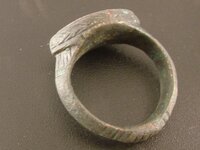
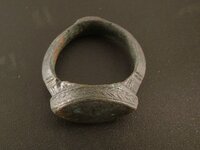
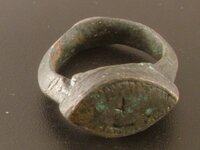
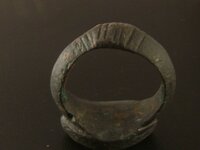
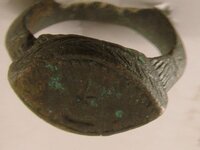



 for a Roman ring
for a Roman ring

